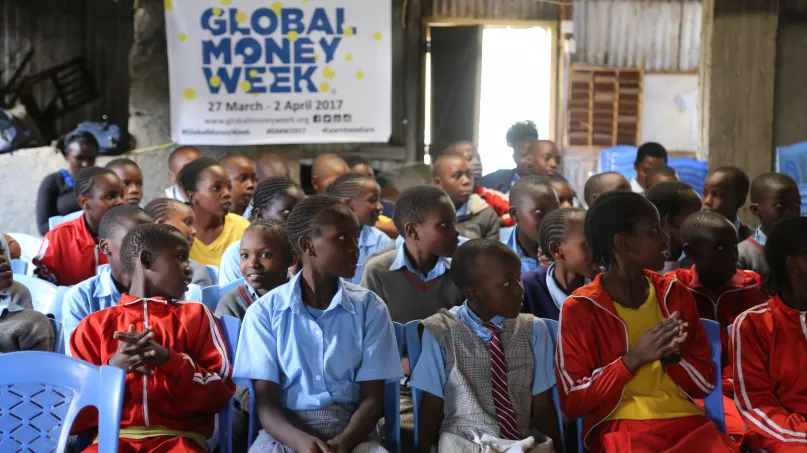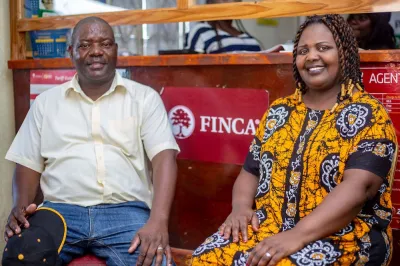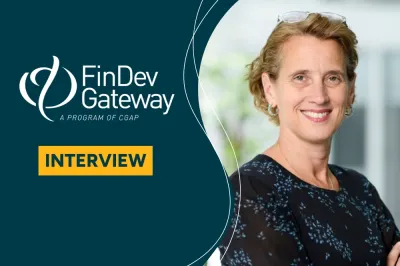Five Common Misconceptions About Financial Education for Children and Youth

Children and youth make up 42% of the world population. More than 500 million youth aged 15-24 live on less than USD 2 a day. Yet children are often left out of the conversation on poverty. This is a mistake. A focus on youth and children can help to break cycles of poverty, so that children don’t end up in the same financial traps that their parents did, such as taking out a loan they can’t afford, or not asking for much needed financial help.
Child and Youth Finance International (CYFI) believes that ending poverty requires teaching children and youth how to manage, handle, earn and spend money responsibly . But what do we really know about financial education for children and youth? Here we help to dispel some of the five most common misconceptions we’ve encountered.
Misconception #1 - Children do not need immediate help in finance.
Unfortunately, children are often placed in positions where they have to take on adult responsibilities. Children might need to work to help support the family, or they might even become the head of the household at a very young age. At this point, a child must know the basics of how to handle money, how to save, and how to prepare for their future. This is why the Child Finance Movement focuses on making sure that children and youth are taught how to manage money. Whether a child is put in the position of providing for their family or not, they should not have to experience the hardships that their parents did. Teaching children how to handle money can allow them to focus on important previously neglected aspects of their lives.
Misconception #2 - Children and youth lack the capability to learn about finance.
Another misconception is that children and youth lack foresight, are uninterested in finance, and are too naïve to avoid being exploited by financial service providers. However, numerous studies have suggested that the opposite is in fact the case.
In designing the Economic Citizenship Education framework, CYFI found that by the age of five, children are aware of the prices of products they desire, and that by age nine, they can already distinguish between needs and wants. Children, the demographic most adept at learning new skills, can do more than absorb financial knowledge. They can change their behavior by applying this knowledge. Results in Brazil show how youth began to immerse themselves in everyday financial activities, such as household budgeting after a short Financial Education program. A similar study in Germany found that after basic financial education in school, children aged 13-15 were able to predict risks that accompany various financial investments. These cases indicate a willingness of youth to understand and gain practical experience dealing with finance.

Misconception #3 - Financial education is boring.
Financial education is not often seen as a lively subject matter. Money is an abstract concept, which is why children often seem to be uninterested. Not because they do not want to learn, but because they don’t know where to start. Global Money Week, CYFI’s annual money awareness campaign, creates the ability for children to see how the world of finance works up close. This is done by taking children around stock exchanges, banks, and ministries of finance, but also simply talking to children and answering their questions.
At CYFI we have found that children’s lack of participation in financial matters is often due to the adults in their lives being unwilling or unable to help children in their financial education. However, once given the opportunity, children themselves always want to learn about money matters.
Misconception #4 - Only adults can run successful businesses.
A common misconception in many places is that a successful business can only be founded by wealthy adults. Wrong! There are thousands of businesses led by young entrepreneurs, and they have an edge over their older counterparts as more tech-savvy, young entrepreneurs are finding innovative solutions to problems in their communities. For example, Masaba Yunus noticed the high-levels of theft of boda bodas (bicycle and motorcycle taxis) in Uganda and decided to launch Track 24 (U) Ltd, a GPS allowing boda boda owners to track and, if necessary, immobilize their vehicle through a mobile app.
Budding entrepreneurs do have setbacks – though these are often attributed to insufficient resources (bank loans, start-up capital), or insufficient support. CYFI’s Ye! Community for young entrepreneurs tackles these obstacles by providing platforms for young entrepreneurs to pitch business ideas, advocating small and medium enterprise (SME)-friendly changes to policies, linking entrepreneurs with business coaches, designing online tools to guide entrepreneurs, and creating a network of young entrepreneurs who can share their challenges and ideas.
Misconception #5 – There are no youth-friendly banking products available.
Youth are 44% less likely to save in formal institutions than adults partly due to the inflexibility of banking regulations and policies making it hard for financial service providers (FSPs) to offer appropriate youth-friendly financial products. However, increasing recognition of youth financial needs means FSPs are designing financial products that appropriately address youth attitudes, aspirations, and banking practices.
CYFI initiatives, such as SchoolBank and the Child and Youth Friendly Banking Principles, have identified the financial needs of young people. An example of a bank that has addressed such needs is the Ugandan Finance Trust Bank, which offers a range of youth savings accounts, dependent on the age, gender and needs of users.
There is still a long way to go until youth-friendly banking products are accessible by the billions of youth globally, and achieving this will depend on the willingness of both governments and FSPs. Yet, small changes can go a long way in the world of financial inclusion. After the State Government of Kerala lowered the minimum age to operate a bank account, Kerala Gramin Bank has successfully reached over 50,000 local children with their FI@School financial education program.
****
It is imperative that we include children and youth in the financial system, and teach them how to handle, earn, save and spend money. This is why CYFI is working together with partners in over 140 countries to reshape financial systems, with the aim of empowering children and youth to tackle poverty and inequality worldwide.


